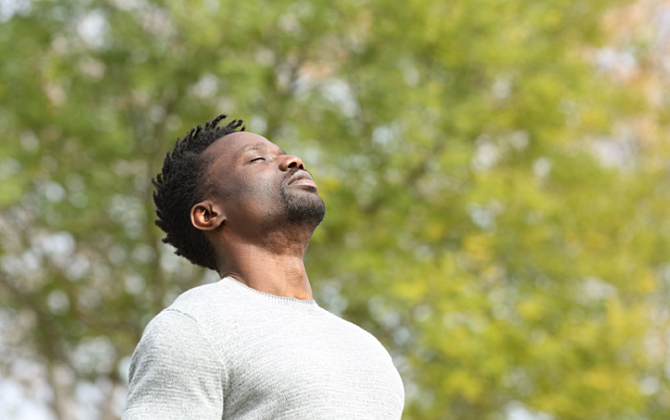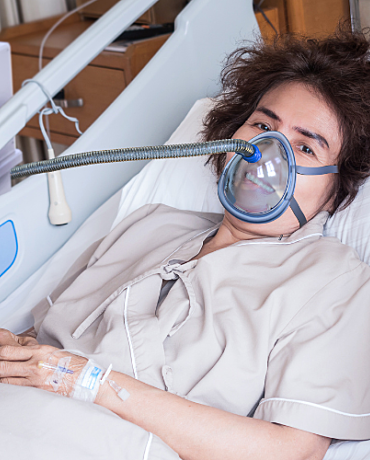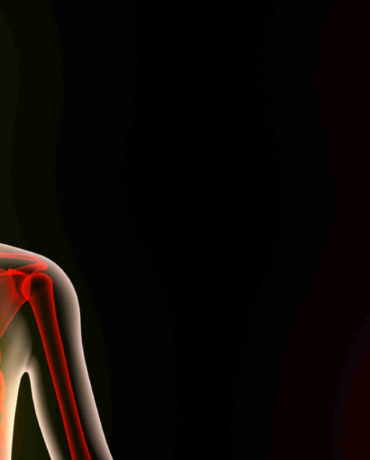Breathing
We look at both voluntary and involuntary control of human breathing in order to understand how respiratory issues can relate to various health conditions.
We look at both voluntary and involuntary control of human breathing in order to understand how respiratory issues can relate to various health conditions.

However, the way these two mechanisms for breathing interact is still not well understood.
Our overall goal is to determine the role of neural drive in impairments of respiratory muscle function in older adults (over 65 years), people with chronic obstructive pulmonary disease (COPD), spinal injury or obstructive sleep apnoea (OSA).
Respiratory impairment is a common and debilitating medical condition for older adults and people with chronic obstructive pulmonary disease (COPD). This condition is the third-highest ranking disease burden in Australia and New Zealand. Respiratory illness limits daily activities and reduces health-related quality of life. These consequences and frequent hospitalisations are a public health burden that cost over $1 billion per year.
After cervical spinal cord injury (SCI), the respiratory muscles are partly or completely paralysed. There are two major clinical consequences of this: the ability to get air into the lungs is diminished as is the ability to cough to remove secretions. This results in a lifetime of recurrent respiratory tract infections that often proceed to pneumonia and frequent hospitalisations.
People with cervical SCI are 150 times more likely to die from respiratory complications than the general population. A recent longitudinal study of 283 people with cervical SCI showed that respiratory muscle weakness is linked to incidental pneumonia. There is an urgent need to identify a simple and effective treatment for weak respiratory muscles and the prevention of respiratory complications after SCI.
Obstructive Sleep Apnoea (OSA) is a sleep disorder that affects more than 4% of the population and can lead to symptoms from daytime drowsiness to high blood pressure. People with sleep apnoea are often not breathing normally during sleep and may experience periods where the airway closes and they are unable to breathe. In severe sleep apnoea this can occur 50-60 times each hour.
Our experiments have looked at the voluntary and involuntary drives to the breathing muscles to try to understand neural control of breathing. In addition, we are looking at the potential cortical contributions to resting breathing in respiratory disorders.
Within the central nervous system, our research has identified three sites that can potentially cause respiratory issues: the sensorimotor cortex, the medullary respiratory centres, and spinal reflex circuits. We are taking a multi-faceted approach to investigate each of these three potential sites of failure of respiratory neural control. This could help us determine the central mechanisms of respiratory motor impairment.
Internationally, we are also one of the only research groups who make motor unit recordings from human respiratory pump muscles. This is the only direct measure of neural drive.
Our research has shown that the neural drive to this muscle is very complex, more so than any limb muscle. We have also pioneered new methods to image this muscle using Functional Magnetic Resonance Imaging (fMRI) and ultrasound. We are now planning to look at how changes in muscle architecture and mechanics relate to the neural drive to the muscle and whether that relationship is maintained in people with sleep apnoea.

Foundation Scientist, NeuRA

Senior Principal Research Scientist

Senior Principal Research Scientist
Every dollar of community support enables our scientists to continue making life-changing discoveries that contribute to a brighter and healthier future.
Run, swim or bake your way to making a positive difference in the lives of people touched by brain and nervous system disorders.
Stay informed about our latest research breakthroughs, scientific discoveries and the incredible minds behind them – subscribe today.
Neuroscience Research Australia respectfully acknowledges the Bidjigal and Gadigal peoples of the Eora Nation as the Traditional Owners of the Land on which we stand and pay our respects to Elders past and present.
Redevelopment of the NeuRA website has been made possible by the generous support of Conexus Financial.

